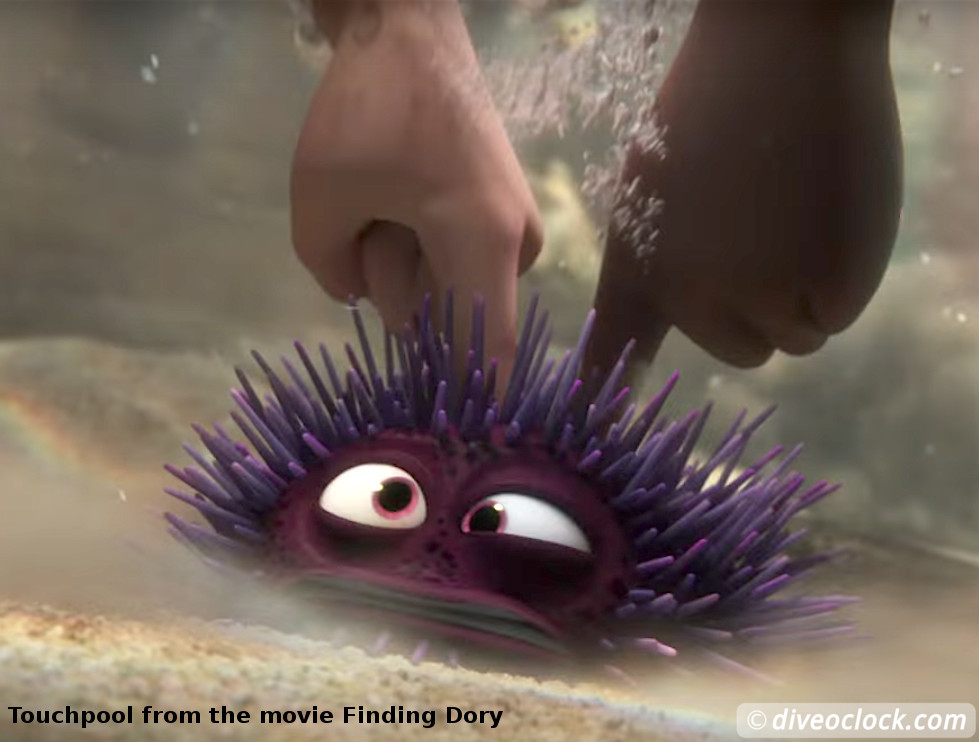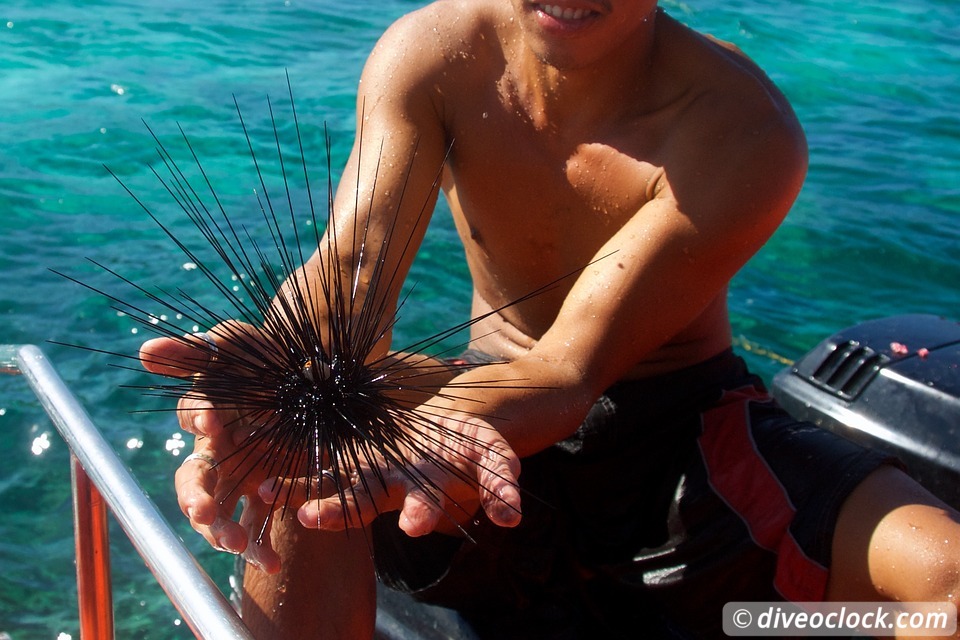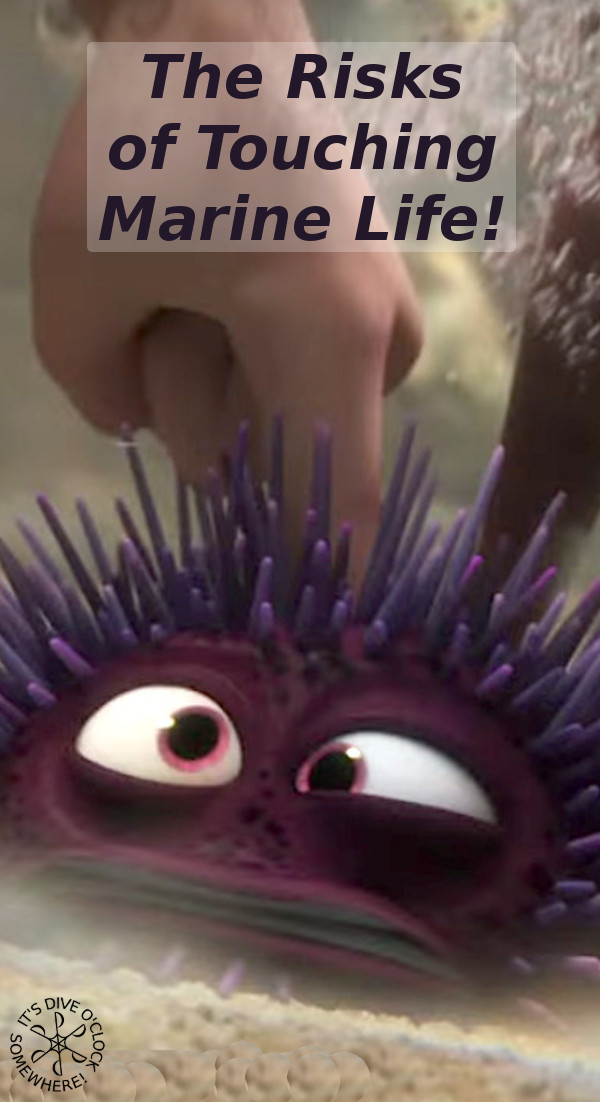
The Risks of Touching Marine Life Explained
Have you been in the position where your dive guide or buddy showed you something by grabbing it? Picking up a sea cucumber, using a stick to grab an octopus or poking a puffer fish to see how big they can get? Did you wonder if this is good or bad behavior and WHY people always say NOT to touch marine life?
They can get really sick!
A lot of marine species have an anti-bacterial layer (mucus) over their body to protect themselves from parasites. If you touch that slimy layer you can damage it and they get vulnerable to infections. Manta rays and whale sharks are examples, just by touching one of these giants they can get really sick.Energy loss makes them vulnerable for predators!
Puffer fish are a great example here. They can inflate themselves as a defense mechanism and triple their size. During that time they are less mobile (slow swimming), stressed and therefore vulnerable to predators. Once they are 'inflated' it takes them several hours to return back to normal. Some puffer species need more time to recover after every inflation and eventually they are not able to inflate anymore. Puffers do not hold their breath but inflate themselves with water. They can inflate themselves with air at the surface as well but since their stomachs are not build for this they will die from air inflation.
Touching coral can kill hundreds
Corals are living animals, not rocks, that are very slow growing and very fragile. By touching coral to stabilize yourself or to take a photo you could kill hundreds of polyps. Corals can get sick and vulnerable for infections because they have a protective layer of (coral) mucus as well. Breaking off pieces of hard corals is another huge risk. Especially table corals are often severely damaged by divers that accidentally bump into it due to strong currents or the lack of proper buoyancy control and/or focus. Death coral will no longer provide a habitat for the animals living around it and the whole reef ecosystem will suffer. Read about coral health care here.Moving them around for a photo shoot can kill them!
Photos with wildlife are getting more and more popular and it cost the lives of animals like sharks and dolphins. Often they are pulled out from the sea for some nice shots. Stress, the lack of water and/or sun heat are easy killers for some marine animals, even for the beautiful starfish. Taking the most awesome photos with marine life can be wonderful but some animals have paid the highest price when people positioned them 'right'... Further read: Selfish animal photos trend continues....

You can get infected, bitten or worse!
Stone fish, Lion fish, urchins and jellyfish are animals that can sting as soon as you touch them. Other animals show their 'defense mechanism' only if you are threatening them. They will sting or bite only if you come too close or corner them (moray eels, sea snakes and stingrays) or when YOU are mistaken for food (sharks). There are quite a few venomous marine life species that are deadly to humans, even shells! The Blue ringed octopus can paralyze a human body (long functions) and kill you in 30 minutes, a Box jellyfish in minutes.Is touching marine life always bad?
No, there are exceptions. Sometimes it is OK to touch marine life. Think about people doing research on marine life or taking care of animals that are sick. Those people know what they are doing, how they should do it and act in the interest of the animals and/or their surroundings. In some areas specific species of marine life are overpopulated because they do not belong there and/or do not have enough natural predators. This can influence an ecosystem in a bad way and cause big problems. Some dive centers will actually hunt and kill marine animals to keep the reef healthy. They might even ask for your help.For example: The Crown-of-thorns starfish is a coral eating animal. When there are too many Crown-of-thorns starfish they eat all the corals and the reef can not recover anymore. To control these outbreaks people start killing them in a controlled way. Read about Crown-of-thorns control here.
Another animal that is often invading an ecosystem, and therefore hunted by people, is the Lion fish. They belong in the Indo-Pacific. In America this is a huge problem since the Lion fish is killing dozens of native fish species without having natural predators. Read about the invasive Lion fish here.
Do not go and kill those animals by yourself, always consult your local dive center!!!
What to do next?
Be informed and share your knowledge. Convince others and give the right example, as easy as that!A chain reaction always begins with a single action - be the change!
When selecting a dive center, check if they dive environmental friendly. Let them know you do NOT want your guide to grab or touch marine life while diving. Find out if they have a code of conduct or support organizations like Greenfins. While diving, keep your distance from the reef if you are less experienced and do not stand on corals when snorkeling. Do not wear gloves (in the tropics) to prevent yourself from touching anything.
"In the end we will conserve only what we love; we will love only what we understand; and we will understand only what we are taught." (Baba Dioum)
Discussion
What do you think of touching marine life? Are there other circumstances where touching is good or acceptable?
Please share your thoughts below!
Please share your thoughts below!
If you like this post, hit that like button on our Facebook page and stay tuned for more!
Marlies Wolters
Founder of Dive O'Clock "It's dive o'clock somewhere!"
Founder of Dive O'Clock "It's dive o'clock somewhere!"
P.S. About the images: I did not take those photos to show you 'the bad stuff', they are downloaded from a website and free for commercial use.

Continue reading
Share this page:














